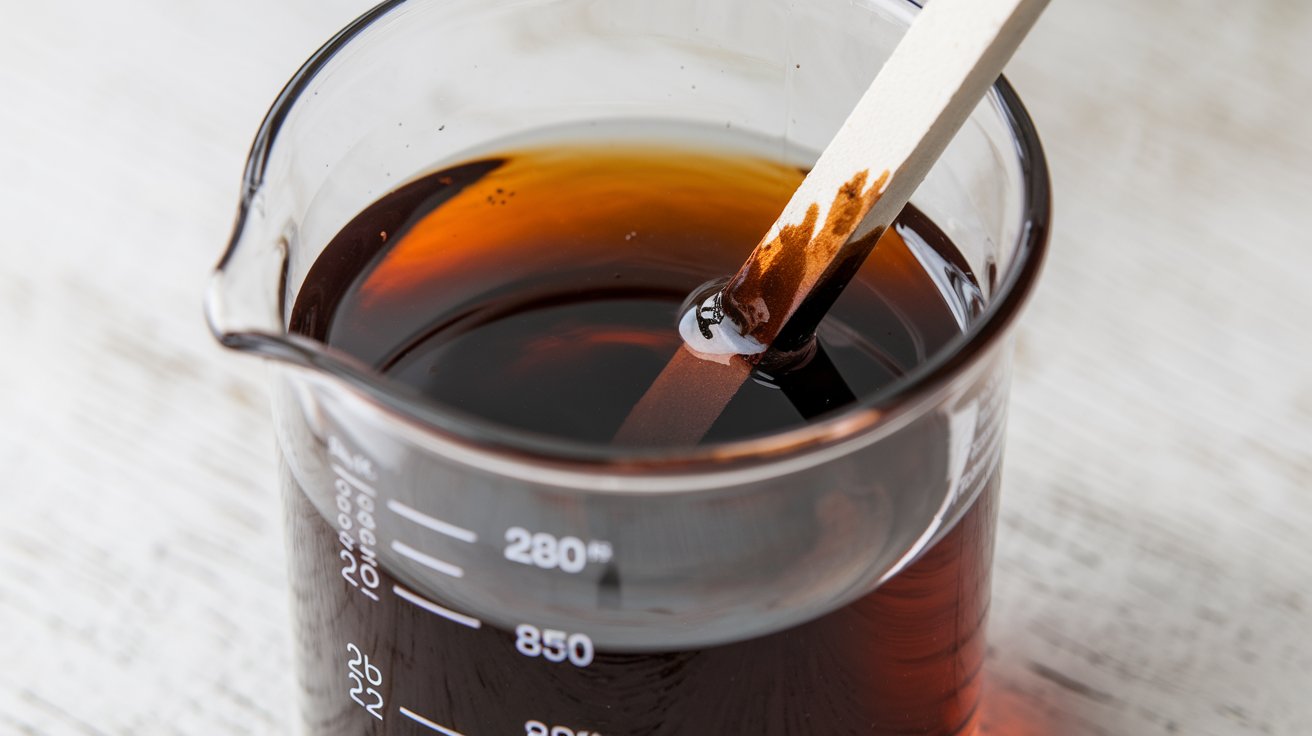
Aluminium bromide might sound like a mouthful, but it's a fascinating compound with a lot of cool facts. What is aluminium bromide? It's a chemical compound made up of aluminium and bromine. This compound comes in different forms, but the most common one is aluminium tribromide (AlBr3). It's used in various industries, from pharmaceuticals to organic chemistry. Ever wondered why it's so important? Aluminium bromide acts as a catalyst in many chemical reactions, speeding things up and making processes more efficient. Whether you're a science enthusiast or just curious, learning about this compound can be both fun and educational. Ready to dive into the world of aluminium bromide? Let's get started!
Key Takeaways:
- Aluminium bromide is a versatile compound used in various industries, from pharmaceuticals to petrochemicals, due to its unique properties and reactivity with other substances.
- While aluminium bromide has practical applications, its handling requires caution due to its corrosive nature and potential environmental impact, highlighting the need for proper safety measures and waste management.
What is Aluminium Bromide?
Aluminium bromide is a chemical compound with the formula AlBr3. It is known for its interesting properties and uses in various industries. Let's dive into some fascinating facts about this compound.
-
Aluminium bromide exists in two forms: anhydrous and hexahydrate. The anhydrous form is a white or yellowish solid, while the hexahydrate form is a colorless solid.
-
The compound is highly hygroscopic, meaning it readily absorbs moisture from the air. This makes it essential to store aluminium bromide in airtight containers.
-
Aluminium bromide is primarily used as a catalyst in organic synthesis, particularly in the Friedel-Crafts alkylation and acylation reactions.
-
When exposed to water, aluminium bromide reacts vigorously, producing hydrogen bromide gas and aluminium hydroxide.
-
The compound has a melting point of 97.5°C (207.5°F) and a boiling point of 255°C (491°F).
Chemical Properties of Aluminium Bromide
Understanding the chemical properties of aluminium bromide can provide insights into its behavior and applications.
-
Aluminium bromide is a Lewis acid, meaning it can accept electron pairs from Lewis bases during chemical reactions.
-
In its anhydrous form, aluminium bromide forms a dimer (Al2Br6) in the solid state and in nonpolar solvents.
-
The compound is soluble in water, alcohol, and ether, making it versatile for various chemical processes.
-
Aluminium bromide can react with other halides, such as chlorine or iodine, to form mixed halides like aluminium chloride bromide (AlClBr2).
-
When heated, aluminium bromide decomposes to produce aluminium and bromine gas.
Uses of Aluminium Bromide
Aluminium bromide has several practical applications across different fields.
-
In the pharmaceutical industry, aluminium bromide is used to synthesize various drugs and active pharmaceutical ingredients.
-
The compound is employed in the production of flame retardants, which help reduce the flammability of materials.
-
Aluminium bromide is used in the manufacture of photographic chemicals, aiding in the development of photographic films and papers.
-
In the field of petrochemicals, aluminium bromide serves as a catalyst in the production of high-octane gasoline.
-
The compound is also utilized in the synthesis of perfumes and fragrances, contributing to the creation of complex scent profiles.
Safety and Handling of Aluminium Bromide
Handling aluminium bromide requires caution due to its reactive nature and potential hazards.
-
Aluminium bromide is corrosive and can cause severe burns upon contact with skin or eyes. Proper protective equipment, such as gloves and goggles, should be worn when handling the compound.
-
Inhalation of aluminium bromide fumes can irritate the respiratory system, leading to coughing, shortness of breath, and throat irritation.
-
The compound should be stored in a cool, dry place, away from moisture and incompatible substances like strong oxidizers.
-
In case of a spill, aluminium bromide should be neutralized with a dilute solution of sodium bicarbonate or sodium carbonate before cleanup.
-
Proper ventilation is essential when working with aluminium bromide to prevent the accumulation of harmful fumes.
Environmental Impact of Aluminium Bromide
The environmental impact of aluminium bromide is an important consideration, especially in industrial applications.
-
Aluminium bromide can contribute to air pollution if not properly managed, as it releases bromine gas upon decomposition.
-
The compound can contaminate water sources if spilled or improperly disposed of, posing risks to aquatic life.
-
Aluminium bromide waste should be treated and neutralized before disposal to minimize environmental harm.
-
Industries using aluminium bromide are encouraged to implement strict waste management practices to reduce environmental impact.
-
Research is ongoing to develop greener alternatives and more sustainable methods for using aluminium bromide in various applications.
Interesting Facts About Aluminium Bromide
Here are some additional intriguing facts about aluminium bromide that highlight its unique characteristics.
-
Aluminium bromide was first synthesized in the 19th century by reacting aluminium with bromine gas.
-
The compound has a distinctive, pungent odor that can be detected even at low concentrations.
-
Aluminium bromide is used in some laboratory experiments to demonstrate the principles of Lewis acid-base chemistry.
-
The hexahydrate form of aluminium bromide can lose water molecules upon heating, converting to the anhydrous form.
-
In its pure form, aluminium bromide is a poor conductor of electricity, but it becomes conductive when dissolved in water or melted.
Fun Facts About Aluminium Bromide
Let's wrap up with some fun and lesser-known facts about aluminium bromide.
-
Aluminium bromide can form complex compounds with other elements, such as aluminium bromide fluoride (AlBrF2).
-
The compound is sometimes used in the production of specialty glass, enhancing its optical properties.
-
Aluminium bromide can act as a dehydrating agent, removing water molecules from other compounds during chemical reactions.
-
The compound's reactivity with water makes it useful in certain moisture-sensitive applications.
-
Aluminium bromide is often used in academic research to study the properties and behavior of halide compounds.
-
The compound's ability to form dimers is a topic of interest in the field of inorganic chemistry.
-
Aluminium bromide can be used to prepare other aluminium compounds, such as aluminium oxide and aluminium hydroxide.
-
The compound's hygroscopic nature makes it useful in drying agents and desiccants.
-
Aluminium bromide is sometimes used in the synthesis of complex organic molecules, such as pharmaceuticals and agrochemicals.
-
The compound's unique properties and versatility continue to make it a valuable tool in scientific research and industrial applications.
Final Thoughts on Aluminium Bromide
Aluminium bromide, a fascinating compound, has a lot to offer. From its chemical properties to its industrial applications, this substance plays a crucial role in various fields. It's used in organic synthesis, pharmaceuticals, and even water treatment. Knowing these facts can help you appreciate its importance in everyday life.
Understanding aluminium bromide's reactivity and safety measures is essential for anyone working with it. Always handle it with care, as it can be hazardous if not managed properly.
Whether you're a student, a professional, or just curious, these facts provide a solid foundation. Aluminium bromide isn't just a chemical; it's a key player in many processes that keep our world running smoothly. So next time you encounter it, you'll know just how significant it really is.
Frequently Asked Questions
Was this page helpful?
Our commitment to delivering trustworthy and engaging content is at the heart of what we do. Each fact on our site is contributed by real users like you, bringing a wealth of diverse insights and information. To ensure the highest standards of accuracy and reliability, our dedicated editors meticulously review each submission. This process guarantees that the facts we share are not only fascinating but also credible. Trust in our commitment to quality and authenticity as you explore and learn with us.


